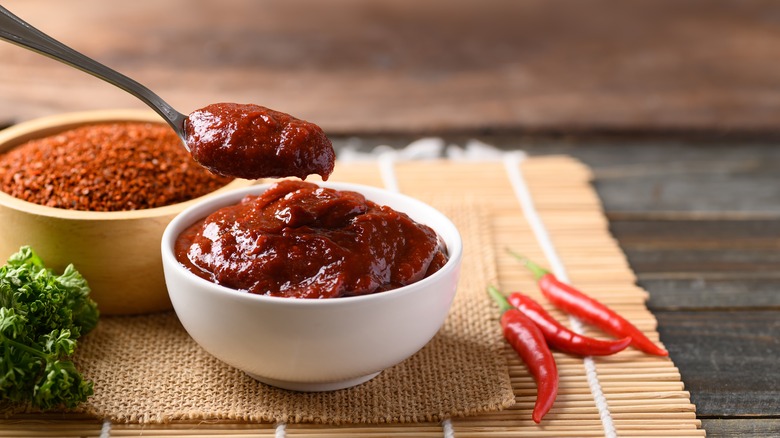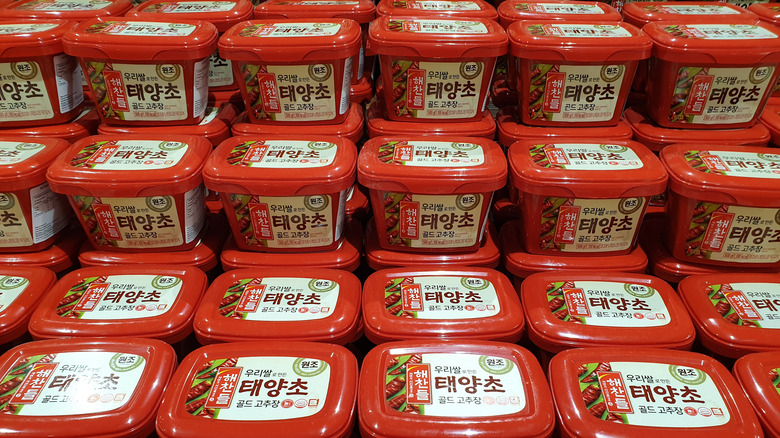Gochujang's Long History In Korea
Gochujang is Korean chili paste. In fact, it quite literally translates to that since the Korean word "gochu" means "chili" while "jang" means "fermented paste or sauce" (via the BBC). This red condiment can exist in both paste and sauce form, but according to Fine Dining Lovers, "gochujang" usually refers to paste. Its paste form primarily consists of four things: glutinous rice, fermented soybeans, red chili flakes or powder, and salt. The sauce, meanwhile, is made by mixing in maple syrup, rice vinegar, and sesame oil, to respectively add sweetness, balance it with sharp flavors, and cut through the heat. Whether pasty or saucy, the result is spicy, salty, and sweet with a hint of umami.
Such a flavorful item has many culinary uses, and it's considered a key part of Korean cuisine. Bon Appétit recommends adding it to slow-roast gochujang chicken, spicy pork/beef bulgogi, stir-fried noodles, squishy Korean rice cakes, or winter squash. Since it's so hot and strong in flavor, gochujang is best used in small doses rather than as a finishing sauce. Fine Dining Lovers notes it can complement anything from bases and dressings to glazes and marinades. You can find gochujang in specialty shops like Korean markets or at some grocery store chains, as well as online retailers. Just look for the red tubs that gochujang usually comes in. Where Korean chili paste originates from is no surprise — it's in the name — but the history of gochujang is fascinating, nonetheless.
Korean chili paste has traveled far and has become an international favorite
According to Fine Dining Lovers, Koreans have been fermenting their chili paste ingredients in earthenware known as "jangdok" stored on outdoor platforms called "jangdokdae" for centuries. This process might stretch back even further than that, though. As discussed by Science Direct, long before red chili pepper came to Korea, something similar existed as early as the ninth century. Back then, folks boiled chicken with "pepper paste" because it was thought to be healthy and nutritious. It's believed black peppercorns or chopi (Korean pepper) were the spicy ingredients used at that point in time.
Half a millennium or so later, red chili peppers arrived. Per the BBC, they were brought to Korea from the Americas via the Columbian Exchange in the 16th century. By the early 18th century, gochujang had taken on its modern form, as recorded in a royal physician's compendium of palace meals. It's even said that gochujang saved the life of King Yeongjo in 1748. During the 19th century, gochujang's popularity became widespread and has even jumped into western cuisine, popular in countries like the U.S. and U.K. since then.
Meanwhile, one-fifth of all South Koreans take gochujang with them when visiting other countries. Fine Dining Lovers also reports that an annual festival is held in Gochujang Village to honor the condiment each year. Indeed, Korean chili paste is a beloved, global affair, and that's something worth celebrating.

